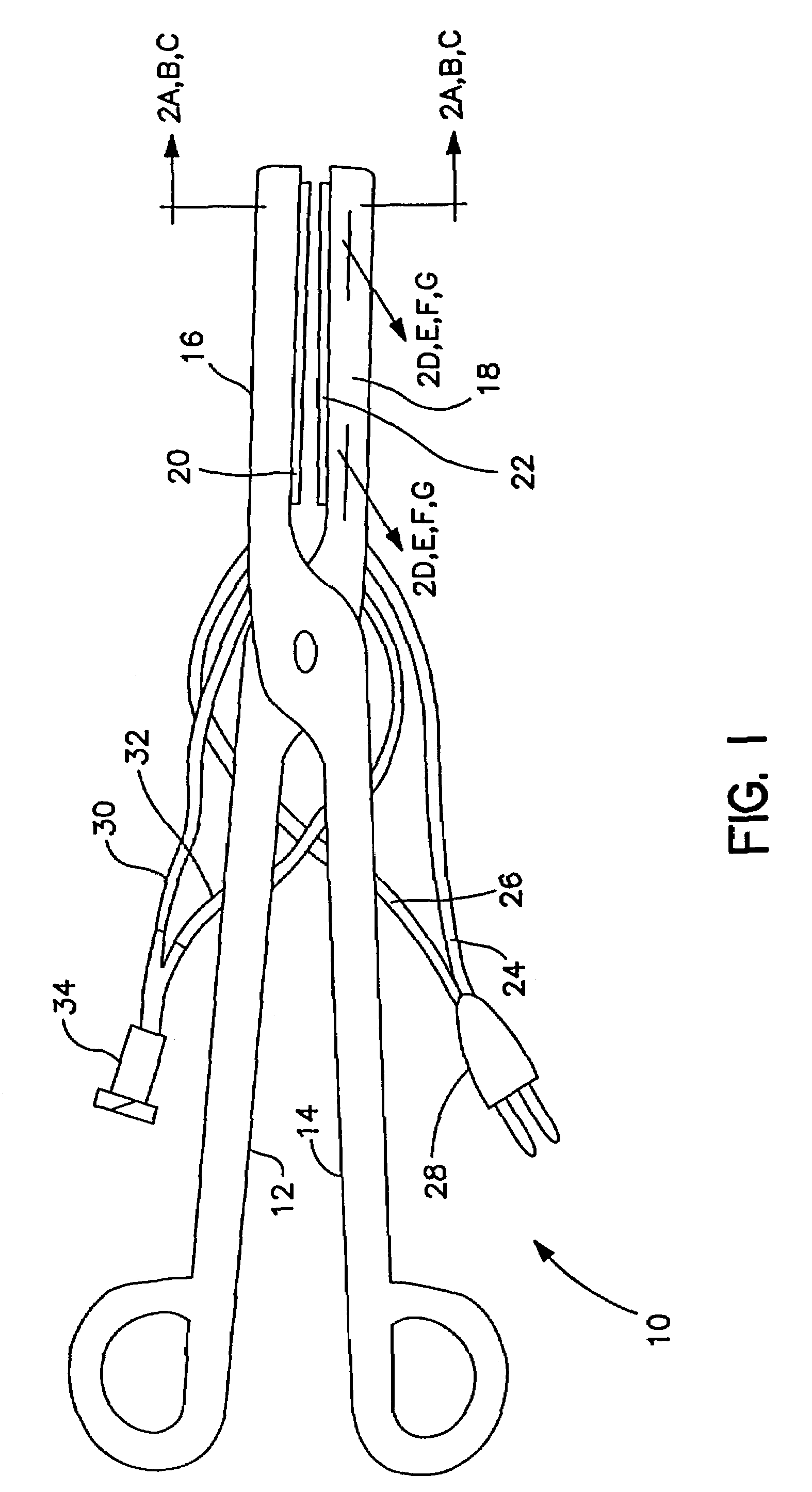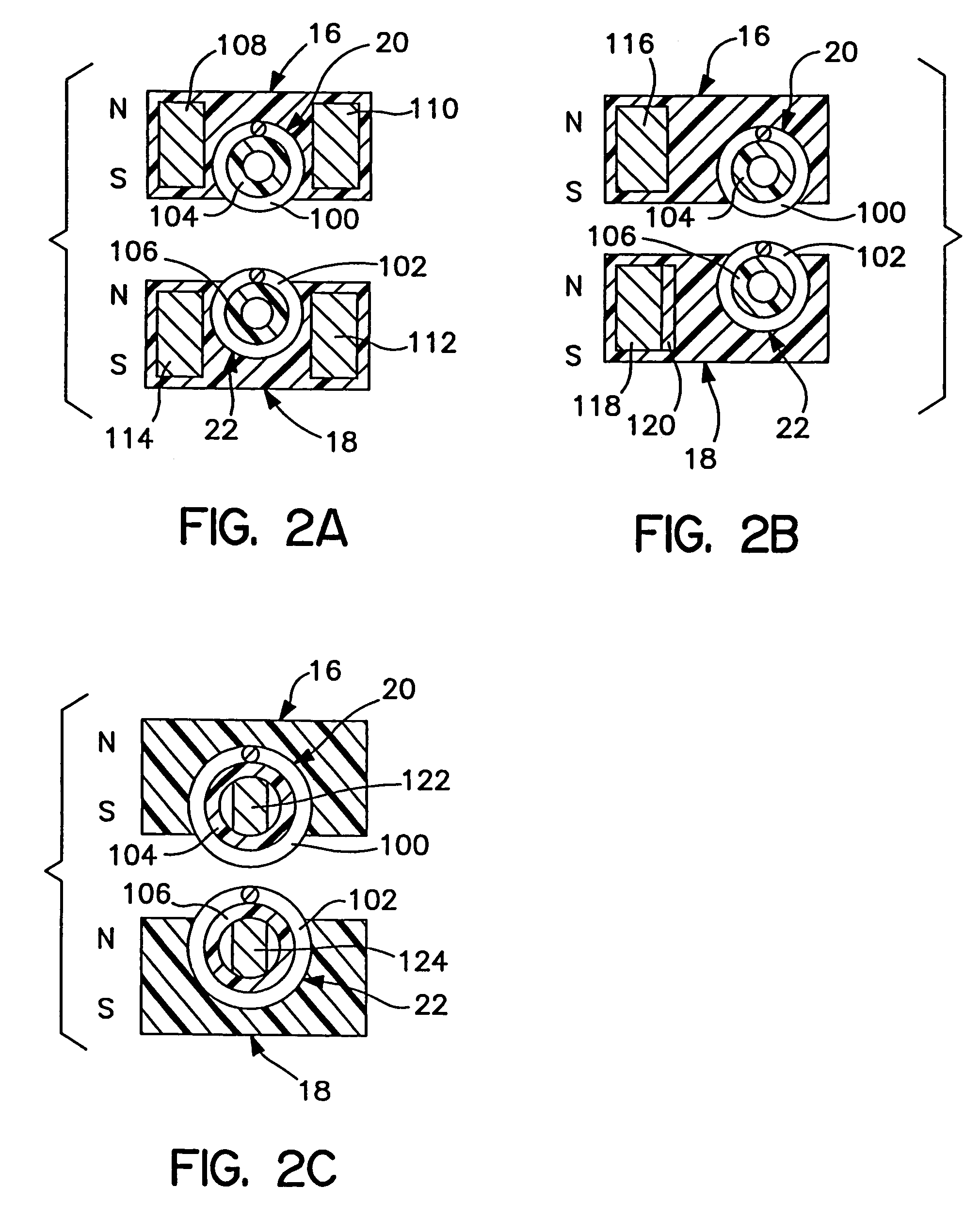Method and apparatus for tissue ablation
a tissue ablation and tissue technology, applied in the field of surgical tools and procedures, can solve the problems of complex procedures and traumatic heart surgery, and achieve the effect of good contact and alignmen
- Summary
- Abstract
- Description
- Claims
- Application Information
AI Technical Summary
Benefits of technology
Problems solved by technology
Method used
Image
Examples
Embodiment Construction
[0014]FIG. 1 is a plan view illustrating a bipolar electrosurgical hemostat of a type in which the present invention may usefully be practiced. The hemostat is provided with handles 14 and 12, coupled to pivoting jaws 16 and 18, respectively. Located along jaws 16 an 18 are ablation electrodes 20 and 22, which, as discussed below, take the form of RF electrodes. In alternative embodiments, electrodes 20 and 22 may be employed to apply microwave radiation, or might be replaced by elongated heating or cooling elements to provide for thermal or cryo-ablation along their length. In the embodiment illustrated, the electrodes are irrigated RF electrodes, allowing for delivery of saline or other conductive fluid along their lengths, generally according to the mechanism as described in U.S. Pat. No. 6,096,037 issued to Mulier, incorporated herein by reference in its entirety. Each electrode is provided with a fluid delivery lumen 30, 32, through which the saline or other conductive fluid is...
PUM
 Login to View More
Login to View More Abstract
Description
Claims
Application Information
 Login to View More
Login to View More - R&D
- Intellectual Property
- Life Sciences
- Materials
- Tech Scout
- Unparalleled Data Quality
- Higher Quality Content
- 60% Fewer Hallucinations
Browse by: Latest US Patents, China's latest patents, Technical Efficacy Thesaurus, Application Domain, Technology Topic, Popular Technical Reports.
© 2025 PatSnap. All rights reserved.Legal|Privacy policy|Modern Slavery Act Transparency Statement|Sitemap|About US| Contact US: help@patsnap.com



